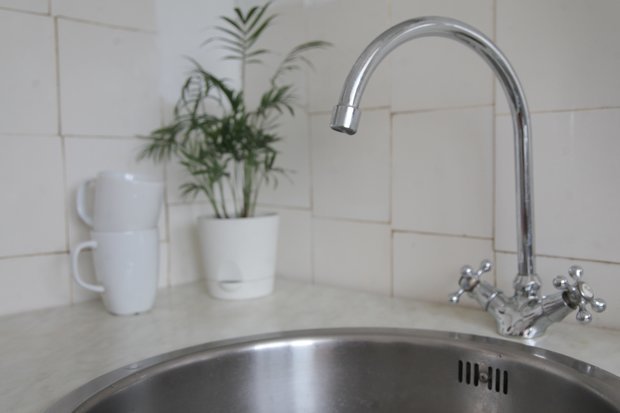‘The risk of dioxins in tap water is very high’
A water supply specialist in Tatarstan urges to check the quality of drinking water in Kazan

The provision of high-quality drinking water to the population remains one of the topical issues for Kazan and the republic. Water supply expert Nikolay Petrov-Tekin has been dealing with this problem for about 20 years. Even after retiring, the former employee of the Ministry of Ecology of the Republic of Tatarstan continues to work. In the author's column for Realnoe Vremya, the specialist explains why it is important to regularly monitor the quality of tap water in Tatarstan, checking it for the content of dioxins. “Exceeding the dose of MPC is possible even with an insignificant amount of phenols formed in the Volga water from the decomposition of algae during flowering, when interacting with chlorine," he warns.
It is important to check the water for dioxins
Water is the most consumed food product. Water quality is the basis of quality of life. According to WHO, 80% of diseases are the result of the use of environmentally dirty water. Dioxins and dioxin-like toxicants contained in drinking water are particularly dangerous for the gene pool. Dioxins have polytoxicity, are an absolute poison for living matter. Prolonged exposure to dioxins, even in small concentrations, leads to an increase in various serious diseases, a decrease in immunity.
The maximum permissible concentration (MPC) of dioxins in drinking water according to sanitary standards is 0,000035 mg/l, and in the USA the MPC value is three orders of magnitude, that is exactly a thousand times less and is 0,00000005 mg/l. This problem concerns Tatarstan directly. Exceeding the dose of MPC is possible even with an insignificant amount of phenols formed in the Volga water from the decomposition of algae during flowering, when interacting with chlorine. The combination of these two substances definitely leads to the formation of dioxins and creates a threat of triggering the mechanism of ecological catastrophe.

V.V. Morozov, who headed the sanitary and epidemiological service of Tatarstan for 27 years, also acknowledged that such danger exists and sent a request to the city Vodokanal with a recommendation to check the tap water for dioxins. After some time, he received an answer to his request: the department stated that such checks are not provided for by regulations.
A few years ago, Rosepidnadzor recognised that there is a possibility of dioxin content in water and also sent a recommendation to Vodokanal to check the dioxin content in drinking water on an industrial scale. In response, it was reported that the water would be taken to the St. Petersburg company for inspection. I believe that this issue must be under the control of the public — the procedure for sampling water for testing. Today there are no independent water testing laboratories, and in my opinion this is a problem.

“The MPC should be increased”
In our country, the MPC index for dioxins in drinking water is 1,300 times lower than in foreign countries. I think it needs to be changed. Wastewater treatment plants for water treatment in Kazan were built in the 1930s and 1940s using technology adopted at the beginning of the century! It is designed to purify water only from natural impurities. But after all, chemicals have appeared in the Volga today, which in previous years were not in sight.
The most dangerous thing is that there are heavy metal salts in the water, which gradually accumulate in the body and are practically not excreted from it. Moreover, phenols have recently been found in the water. So, when these rather harmless substances themselves combine with chlorine, very terrible dioxins are formed. This is an absolute poison for a living organism. And our water is disinfected with chlorine. It is decontaminated or, according to international terminology, sterilised. A small dose of chlorine is added to the water from the Volga. Then this water passes through the settling tanks, gets into a special tank through filters, after which it is supposedly ready for consumption, in any case, it complies with GOST.
But this GOST was adopted sometime in the 1930s. Although it is updated every 10 years, the water on it is controlled only by 28 indicators. While according to European and international standards — by 100 indicators. But it's not just that. From the reservoir, water is supplied through a common pipeline system to the consumer: both industrial enterprises and the population. So, secondary pollution occurs in the pipes.

Our city pipelines with a length of about 500 kilometres were also built starting from the 1930s. It is not surprising that some pipes have holes, ground water gets into them. Previously, building codes stipulated that only cast-iron pipes could be used for drinking water. The water in them does not deteriorate and the inner surface of the pipes does not overgrow to the same extent as in steel ones. Then, due to the rapid growth of cities, cast-iron pipes became scarce, and as an exception, steel pipes were allowed to be used. Provided that the inner surface of the pipe is protected by cement-sand coating or enameled. It is clear that the exception very quickly became the rule, and the pipes are not protected. So, inside they are destroyed, and even become a reserve of bacteria.
Secondary contamination of the water in the pipes could lead to an increase in gastrointestinal diseases. To prevent this, the water is suffocated with chlorine. That is, it is added to the water again after it has been treated at the water intake, moreover in such an amount that the chlorine reaches the faucet in the kitchen. However, chlorine is not vitamins at all. In France, for example, the use of chlorine for water sterilisation has been banned, ozonation is carried out there. But it is possible in our country. Even if the water is ozonised at the intake, but then it will flow through the same steel pipes.

“We need a drinking water plant”
Moreover, ozonation is expensive, because you have to process about 400-500 liters of drinking water per day per person. According to physiological norms, only one and a half to two liters of water per day are needed. So there is no such need. And it is unthinkable to make 500 liters per person a food product and then use them for non-food purposes — to wash, wash floors, take a shower, give them to enterprises. One and a half or two liters is quite a bit, this is the way out. Because such an amount of water can be made clean.
In the current situation, in order to provide the population with high-quality drinking water according to the minimum physiological standards of 2,5-3 liters per person per day, it is necessary to build a drinking water plant with the active participation of the state. Such an enterprise should appear in Kazan, and this issue should not be left to purely commercial structures. Fortunately, there are still clean sources (without dioxins) of artesian waters of the paleodoline of the Volga River. This will help to get rid of all kinds of man-made pollutants, including chlorine and dioxins.
This problem has been repeatedly discussed in the republic over the past 30 years — both in the press and in the speeches of specialists, but there is no response yet. In case of a positive decision, the population of the city will be provided with normal drinking water of food quality free of charge.
Reference
The author's opinion may not coincide with the position of the editorial board of Realnoe Vremya.